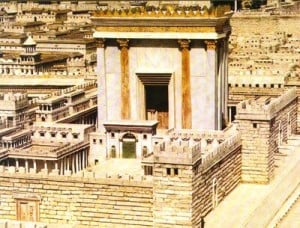Overview of Parsha Tetzaveh (Exodus 27:20-30:10)
The Name of Moshe ( Moses) is mysteriously missing from this portion. What lesson are we to glean from that obvious disappearance?
 G-d tells Moshe without mentioning him by name to receive from the Children of Israel pure olive oil . This is the first time Moshe’s name is not used and he is asked to take Olive oil “for him” , that is to say not “for Me”. Those two points are very instructive. The oil is to be used to fuel the “everlasting flame” of the menorah.It is an everlasting flame that will be kindled by Aaaron every day “from evening till morning.”
G-d tells Moshe without mentioning him by name to receive from the Children of Israel pure olive oil . This is the first time Moshe’s name is not used and he is asked to take Olive oil “for him” , that is to say not “for Me”. Those two points are very instructive. The oil is to be used to fuel the “everlasting flame” of the menorah.It is an everlasting flame that will be kindled by Aaaron every day “from evening till morning.”
Then G-d describes the very unique and specialised Priestly garments. Each item carries a deep spiritual message as does their connectedness. All Kohanim wore:a ketonet -a long linen tunic; The Michnasayim or pants made of linen; a mitznefet -a turban made of linen; and finally an avnet -a belt or sash wound above the waist.
In addition to these four priestly garments the High priest also wore the the ephod,which looked like an apron worn in a reverse manner; the choshen, the priestly breastplate that had woven into it the twelve stones inscribed with the names of the twelve tribes; the me’eel a coat of blue wool, with bells and pomegranates on its hem; the tzitz the golden crown worn on the forehead bearing the inscription “Holy to HaShem”.
The portion then describes the instructions for the seven-day initiation of Aaron and his four sons into the work of the temple, and for the making of the Golden Altar on which the ketoret mystical “incense” was burned.
Listen to this week’s podcast:
